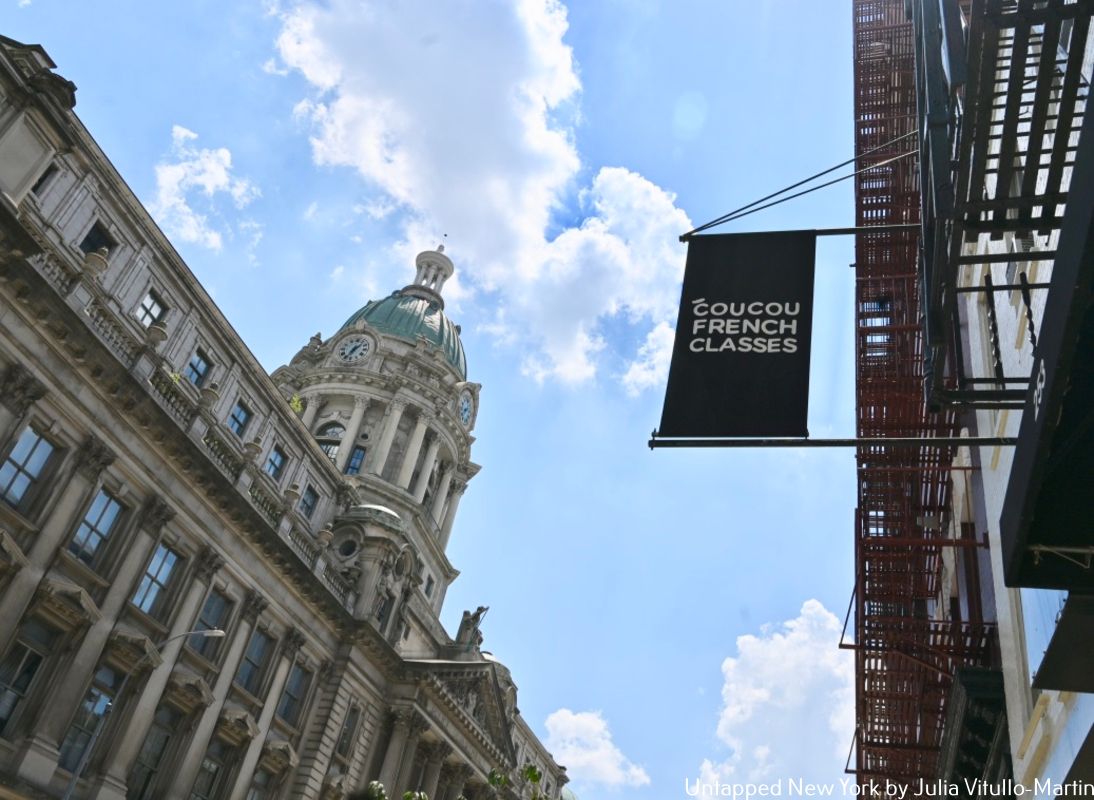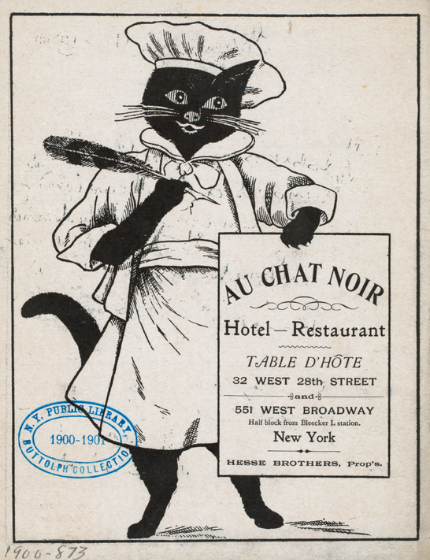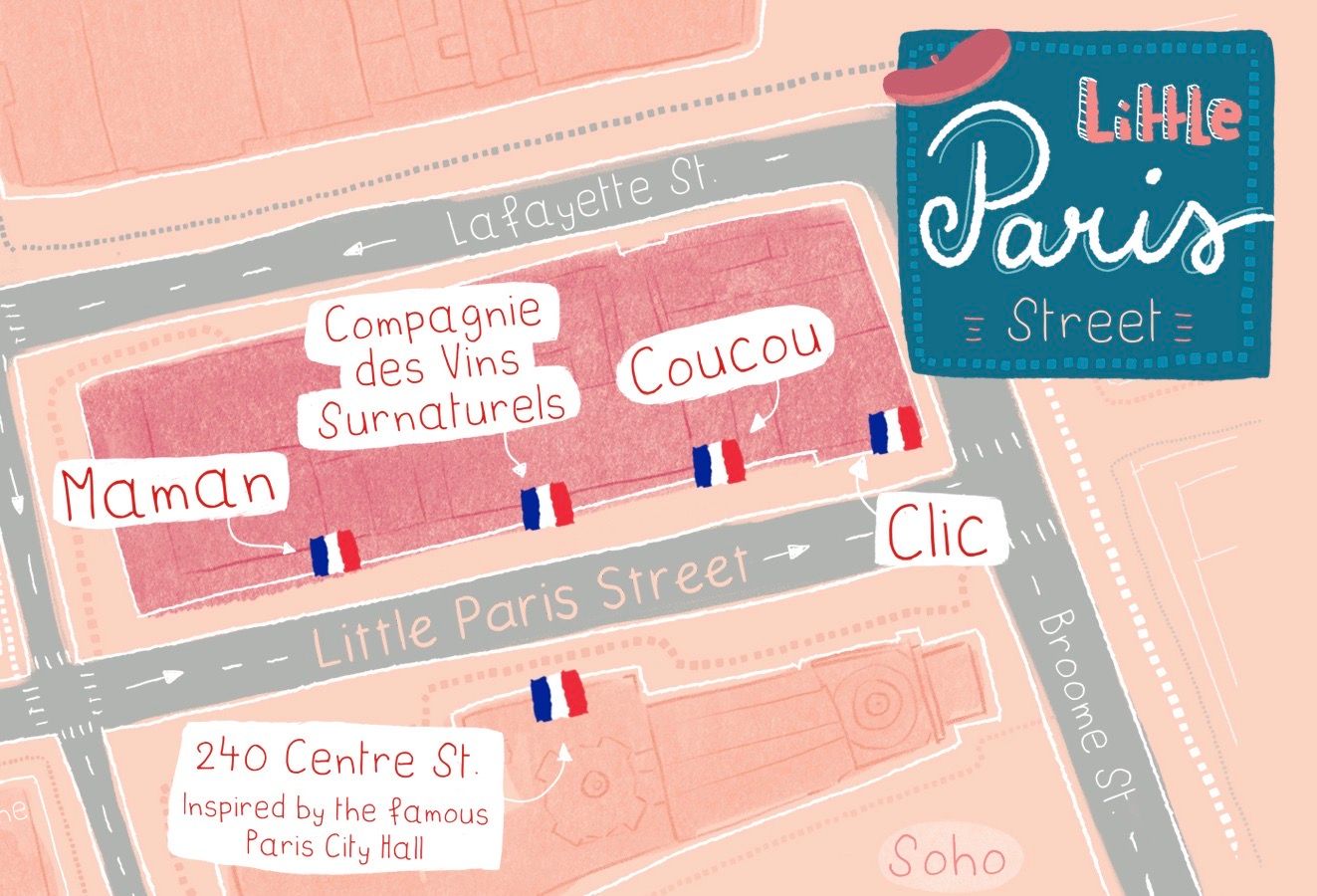Last Chance to Catch NYC's Holiday Notalgia Train
We met the voices of the NYC subway on our nostalgia ride this weekend!


New York City is currently home to several ethnic enclaves, from the Little Dominican Republic in Washington Heights, Manhattan to Little Guyana in Richmond Hill, Queens. While many of these micro-neighborhoods are bursting with clothing stores with traditional cultural pieces and restaurants selling dishes from around the world, some ethnic enclaves, including Soho‘s Little France, faded as their residents dispersed.

From the 1870s until the 1890s, Soho, specifically in the area between Washington Square South and Grand Street, and West Broadway and Greene Street was home to somewhere between 20,000 and 24,000 French immigrants. This French enclave was filled with shops, charcuteries, bakeries, cafes, and basement restaurants — a sharp contrast to today’s landscape of cast-iron buildings and large footprint retail in Soho.
“There are secret meetings in obscure little cafes, into which strangers seldom enter; where the last movements of the Nihilists are discussed, and the would be regicide is commended over draughts of absinthe and more innocent beer,” an article in Scribner’s Magazine from 1879 reads, describing the scene.
The author of the Scriber’s Magazine article makes note that the French are nonetheless “mostly industrious, thrifty and honest. They earn little and spend less.” Still, there is some element of distance from the writers’ explorations with the community: “They talk French and retain many of the customs of the motherland. It is notable how insular and exclusive they are; for Broadway with its assimilative influence, is the eastern limit of the district.”

The ethnic enclave’s popular locales included the cafe Grand Vatel and the restaurant Taverne Alsacienne on Greene Street, where men would hang out to drink at its “impoverished bar” and play billiards. Table d’hote, or prix-fixe, restaurants also filled the area around Bleecker Street and downtown.
However, Little France did not last long after Soho‘s French immigrant population moved to West Chelsea at the end of the nineteenth century. As French businesses popped up along 26th Street west of 6th Avenue, the immigration of the French throughout the city caught the attention of the press. When the Sun reported about the growing number of French businesses in West Chelsea in 1894, the decline of Little France became official.

Despite more than 60,000 French citizens and over 81,000 French speakers living in New York, there is no official ethnic enclave for the city’s French population. Consequently, a new effort to brand a part of Soho as “Little Paris” has emerged, with an influx of new expats settling in New York City from France. Those campaigning for the creation of Little Paris want to begin with Centre Street in Soho.
Although those fighting for Litlle Paris to become a reality have stormed Community Board 2 with a citizen petition and supported new French restaurants and stores in the neighborhood, their goal has yet to be reached. In the meantime, francophones and francophiles can appreciate French culture by frequenting the cafe Maman, the wine bar La Compagnie des Vins Surnaturels, or the boutique Clic, among other French businesses in the neighborhood.
Next, check out a guide to NYC’s future Little Paris!
Subscribe to our newsletter